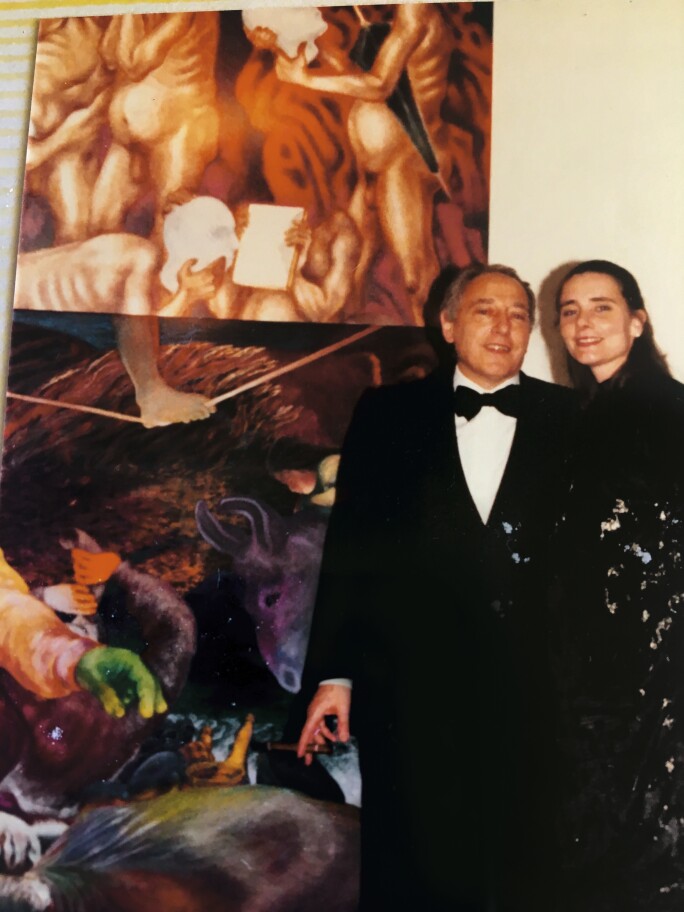“The Melon Seller'... is a continuation of the headless images which I had used as a major motif for more than a decade. This painting is developed from a street scene of a woman selling melons to a group of people selecting the best of their choice. To give it a macabre dimension, I made the woman selling plaster heads and headless men purchasing them.”
Ramachandran’s modernist paintings emerged from a passionate involvement with his surroundings, often leading him to document the human condition. Melon Seller, forms part of the artist’s exploration of satire alongside seminal works such as Grave Digger and King and the Elephant, all conceived in the same year of 1977. Melon Seller depicts a group of headless men inspecting plaster heads sold by a vendor. 'Here the head is shown as an accessory, an inorganic accoutrement symbolizing once again a state of intellectual subservience and civilizational lapse.' (R. S. Kumar, Ramachandran, A Retrospective, Volume 1, National Gallery of Modern Art, New Delhi, 2003, p. 198) The motif of ‘headlessness’ has been a recurring feature of Ramachandran’s work, representing notions of loss, absence of rationality and a slide back into primordiality that he cleverly straddles by humorously comparing heads to watermelons.

Image courtesy Barbier Family Archives